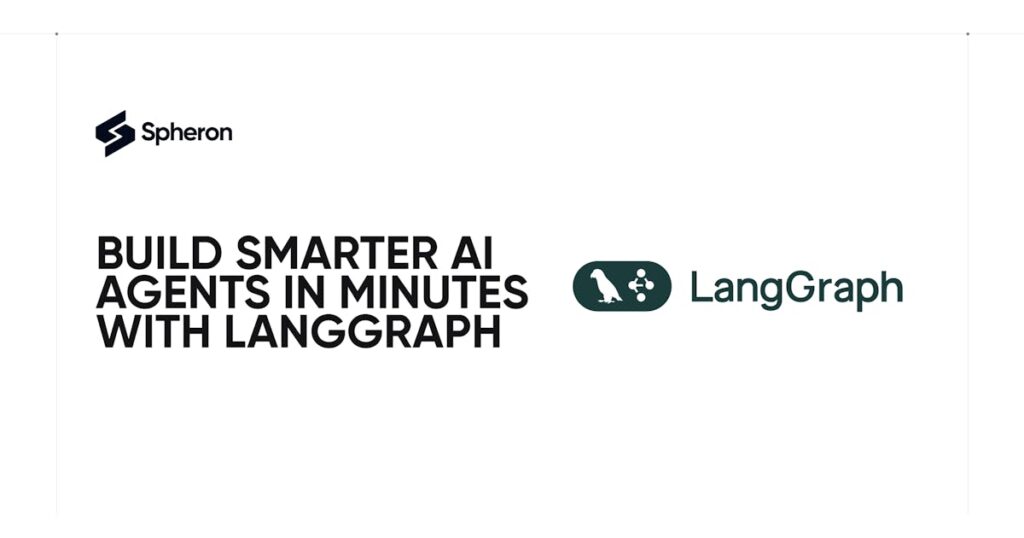Artificial Intelligence (AI) continues to evolve rapidly, with Language Models (LLMs) capable of handling intricate tasks and making adaptive decisions. However, the underlying frameworks supporting these advancements often lag, especially when dealing with multi-step, complex processes. Traditional systems like retrieval-augmented generation (RAG) excel in basic queries but struggle with dynamic workflows.
Enter LangGraph—a powerful library within the LangChain ecosystem. LangGraph revolutionizes the way AI systems are built by enabling the seamless orchestration of multiple agents in cyclic, dynamic workflows. This tool empowers developers to design scalable, intelligent, and flexible AI applications. Let’s dive deep into how LangGraph simplifies building sophisticated AI agent systems.
What is LangGraph?
LangGraph is an advanced library built on top of LangChain. It enhances the traditional agent-based AI systems by introducing the capability to handle cyclic workflows, enabling dynamic decision-making and iterative processing. Unlike LangChain’s Directed Acyclic Graphs (DAGs), which are limited to linear workflows, LangGraph supports loops and conditional execution, making it ideal for multi-step, adaptive AI applications.
Key Features
-
Cyclic Graph Topologies: Enables workflows to revisit steps based on evolving conditions.
-
Stateful Execution: Maintains persistent context throughout the workflow.
-
Multi-Agent Collaboration: Supports coordination among multiple agents, each with unique tools and configurations.
-
Dynamic Edges: Allows conditional branching and decision-making within the workflow.
-
Pre-Built and Custom Agents: Offers flexibility with ready-made agents while supporting customization.
How LangGraph Works
LangGraph’s core capability lies in enabling the cyclic execution of LLM-based workflows. This means agents can loop through tasks, evaluate outcomes, and adapt dynamically. Inspired by frameworks like Apache Beam and Pregel, LangGraph simplifies the implementation of such systems through its graph-based programming model.
Cyclic Workflow Capabilities
Unlike linear workflows that end once all tasks are executed, LangGraph creates cyclic graphs, allowing agents to revisit nodes based on changing conditions. For instance:
-
An agent can fetch weather data, analyze it, and decide whether to gather additional details.
-
Nodes represent tasks (e.g., API calls, data processing), while edges dictate the flow and conditions for looping.
Dynamic Decision-Making
LangGraph’s stateful graphs maintain and update context dynamically. This enables agents to:
-
Adapt their behavior based on updated inputs.
-
Interact with tools or APIs conditionally.
-
Perform iterative computations until a goal is achieved.
Illustration Example: Imagine an agent assessing loan eligibility:
-
It starts with a user’s financial data.
-
If insufficient information is available, it asks for more details.
-
The workflow loops until all necessary data is collected and analyzed.
Getting Started with LangGraph
To harness LangGraph, a few prerequisites and setup steps are necessary.
Prerequisites
Before diving into LangGraph:
-
Obtain API keys for tools like OpenAI or TogetherAI for LLM processing.
-
Install dependencies like
langchain,langgraph, andpython-dotenv.
Setting Up the Environment
-
Create a Virtual Environment:
python -m venv env source env/bin/activate env\Scripts\activate -
Install Required Libraries:
pip install langgraph langchain langchain-community python-dotenv -
Set Up Environment Variables: Create a
.envfile in your project directory:OPENAI_API_KEY=your_openai_key TOGETHER_API_KEY=your_togetherai_key WEATHER_API_KEY=your_weatherapi_keyLoad these variables in your script:
import os from dotenv import load_dotenv load_dotenv() OPENAI_API_KEY = os.getenv('OPENAI_API_KEY')
Building with LangGraph
LangGraph simplifies the development of agents through its flexible tools and nodes. Let’s explore three key implementations:
1. Tool Calling in LangGraph
Define tools for specific functionalities like fetching weather data or conducting web searches.
Example Implementation
import requests
from langchain_core.tools import tool
@tool
def get_weather(location: str):
"""Fetch current weather for a given location."""
api_url = f"http://api.weatherapi.com/v1/current.json?key={os.getenv('WEATHER_API_KEY')}&q={location}"
response = requests.get(api_url).json()
return response if 'location' in response else "Weather Data Not Found"
@tool
def search_web(query: str):
"""Conduct a web search."""
return f"Searching the web for: {query}"
Bind these tools to an LLM for interaction:
from langchain_openai import ChatOpenAI
llm = ChatOpenAI(api_key=OPENAI_API_KEY, model="gpt-4")
llm_with_tools = llm.bind_tools([get_weather, search_web])
2. Using Pre-Built Agents
LangGraph provides a React Agent (Reason and Act), streamlining decision-making.
Example Implementation
from langgraph.prebuilt import create_react_agent
system_prompt = """Use tools to provide accurate responses.
- get_weather: Fetch weather info.
- search_web: Use for general queries.
"""
agent = create_react_agent(model=llm, tools=[get_weather, search_web], state_modifier=system_prompt)
inputs = {"messages": [("user", "What is the weather in New York?")]}
for response in agent.stream(inputs):
print(response["messages"][-1])
3. Developing Custom Agents
LangGraph enables fully customizable workflows using nodes and edges.
Example Implementation
from langgraph.graph import StateGraph, MessagesState, START, END
from langgraph.prebuilt import ToolNode
tools = [get_weather, search_web]
tool_node = ToolNode(tools)
def call_model(state):
messages = state["messages"]
response = llm_with_tools.invoke(messages)
return {"messages": [response]}
workflow = StateGraph(MessagesState)
workflow.add_node("LLM", call_model)
workflow.add_node("Tools", tool_node)
workflow.add_edge(START, "LLM")
workflow.add_edge("LLM", "Tools")
workflow.add_edge("Tools", "LLM")
agent = workflow.compile()
inputs = {"messages": [("user", "Check weather in San Francisco")]}
for chunk in agent.stream(inputs, stream_mode="values"):
print(chunk["messages"][-1])
Applications of LangGraph
LangGraph opens new horizons for AI applications:
-
Chatbots: Build intelligent bots that maintain context and handle complex queries.
-
Autonomous Agents: Develop self-adaptive systems for customer support and monitoring.
-
Workflow Automation: Automate repetitive business processes with intelligent workflows.
-
Multi-Agent Systems: Coordinate agents for inventory management, order processing, and more.
-
Recommendation Systems: Deliver personalized suggestions by analyzing user behavior dynamically.
Conclusion
LangGraph offers a groundbreaking approach to AI agent system development, allowing developers to design dynamic, scalable, and adaptive workflows. By leveraging cyclic graphs, stateful execution, and multi-agent capabilities, LangGraph bridges the gap between AI’s potential and its practical application. Whether you’re creating chatbots, automating workflows, or building recommendation engines, LangGraph makes the process seamless and efficient.
FAQs
-
What makes LangGraph different from LangChain?
LangGraph introduces cyclic workflows, enabling iterative processes unlike LangChain’s linear DAGs. -
Can I use LangGraph without prior experience in LangChain?
Yes, LangGraph is intuitive and provides pre-built agents for ease of use. -
Which LLMs are compatible with LangGraph?
LangGraph supports GPT models, TogetherAI’s Llama, and other open-source LLMs. -
Does LangGraph support custom APIs?
Absolutely! You can integrate any API as a tool for your agents. -
Is LangGraph suitable for real-time applications?
Yes, its stateful execution and dynamic decision-making make it ideal for real-time use cases.

